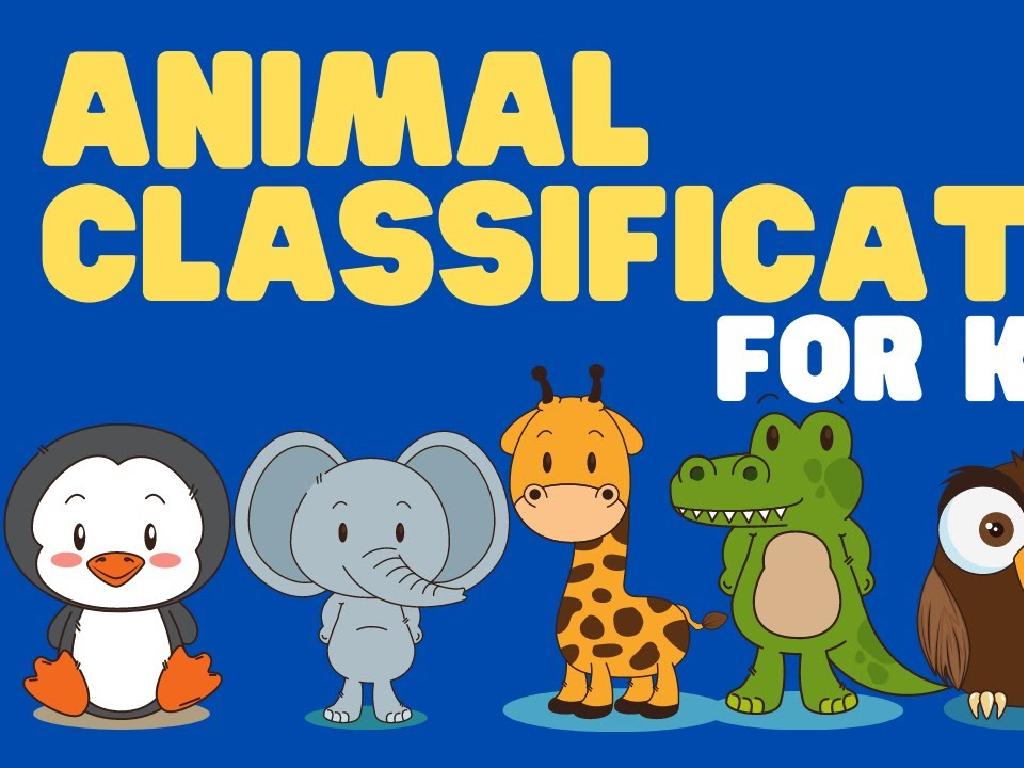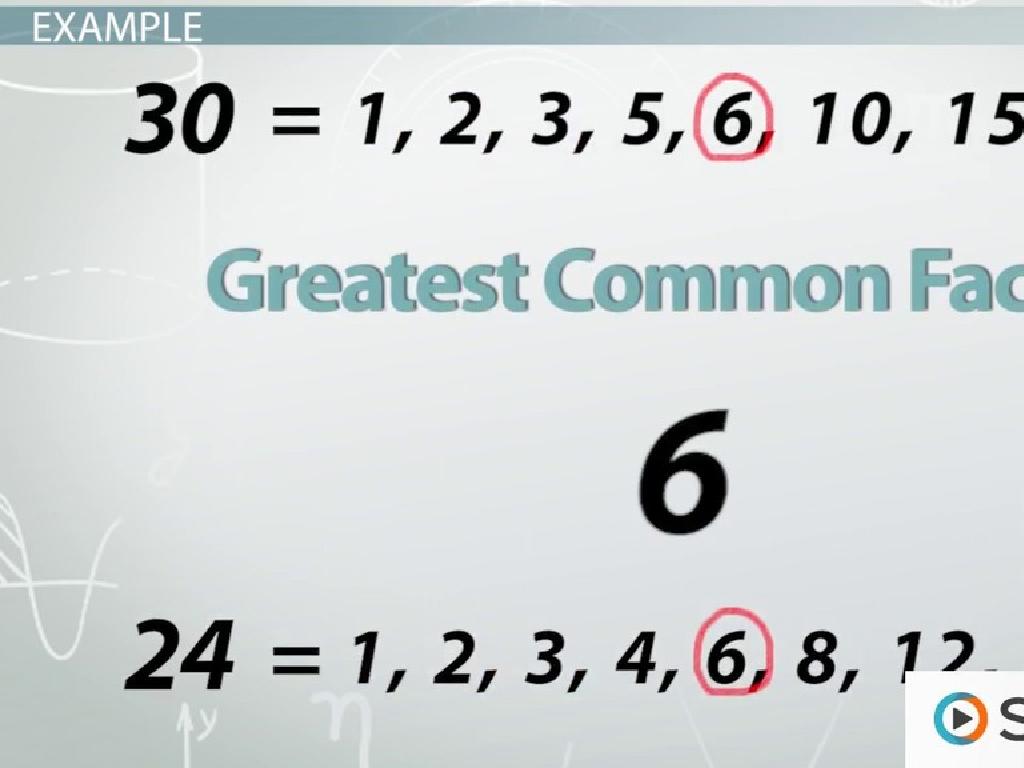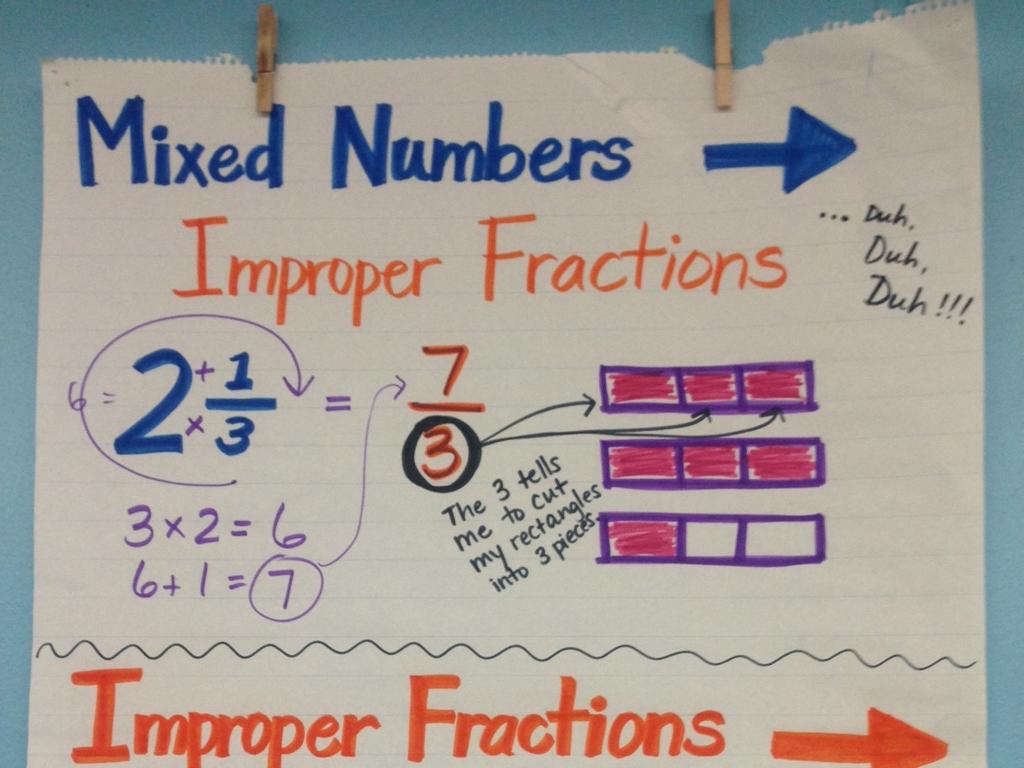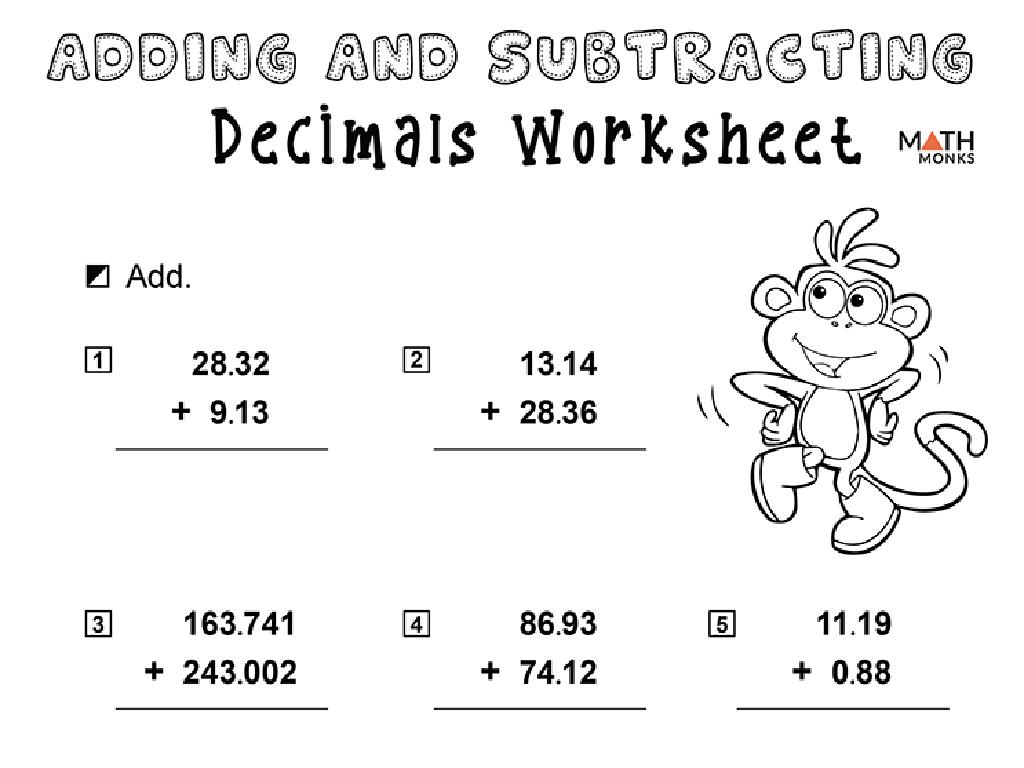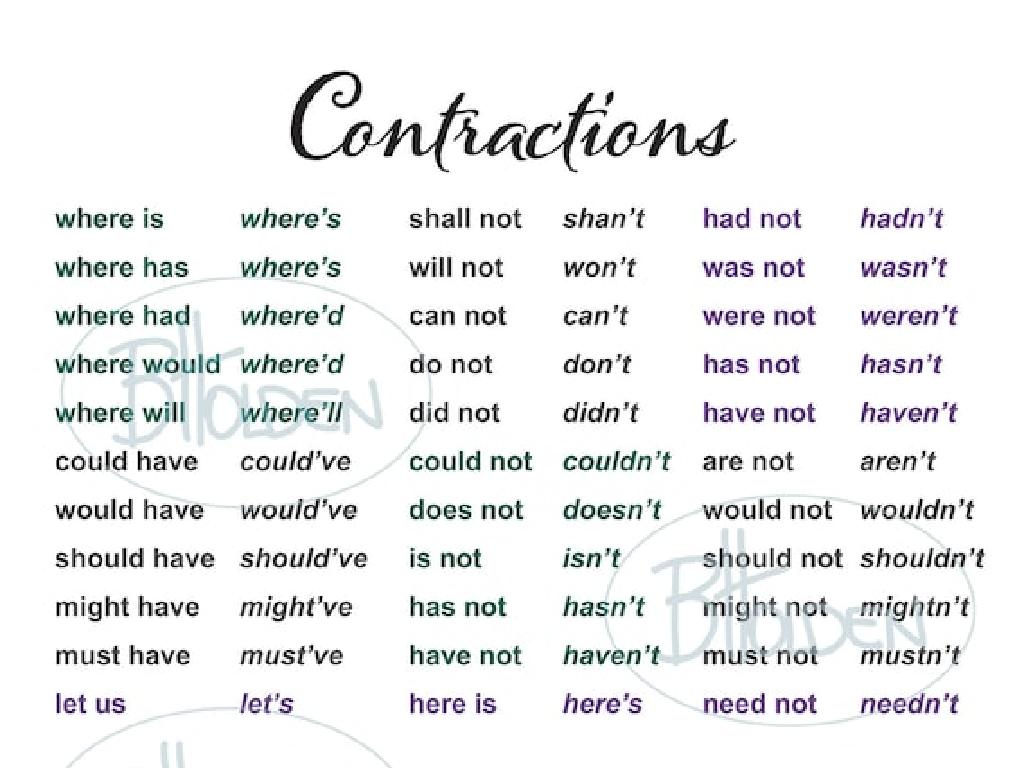Use The Correct Subject Or Verb - With Compound Subjects
Subject: Language arts
Grade: Fifth grade
Topic: Verb Types
Please LOG IN to download the presentation. Access is available to registered users only.
View More Content
Mastering Verbs with Compound Subjects
– Verbs: Action in sentences
– Compound subjects explained
– When two or more subjects are joined by ‘and’ or ‘or’
– Matching verbs with subjects
– Ensure the verb agrees with the compound subject
– Examples and practice
– ‘The cat and dog play together’ not ‘plays’
|
This slide introduces the concept of verbs and their crucial role in sentences, focusing on the use of correct verb forms with compound subjects. Begin by explaining that verbs are the action words in sentences. Then, define compound subjects as two or more subjects that share the same verb, which can be connected by ‘and’ or ‘or’. Emphasize the importance of subject-verb agreement, even when the subject is compound. Provide clear examples, showing both correct and incorrect usage. Encourage students to create their own sentences with compound subjects and to practice identifying and correcting errors in subject-verb agreement. This will help solidify their understanding of how verbs change depending on the subjects they’re connected to.
Understanding Verbs with Compound Subjects
– Define a verb
– A verb is a word that shows action or state of being.
– Verbs in sentences
– ‘Runs’, ‘jumps’, and ‘thinks’ are verbs.
– Verbs show actions
– Like ‘run’, ‘eat’, ‘jump’, telling what someone/something does.
– Verbs with compound subjects
– When two subjects are joined by ‘and’, use a plural verb.
|
Begin with the definition of a verb to ensure students understand that it is a word that represents an action or a state of being. Provide clear examples of verbs within sentences to illustrate how they function in context. Emphasize that verbs are the words that tell us what the subject of the sentence is doing. Introduce the concept of compound subjects, where two or more subjects are joined by ‘and’, and explain that they typically require a plural verb. Use examples like ‘The cat and dog play together’ to show how the verb agrees with the compound subject. This will help students recognize and correctly use verbs with compound subjects in their writing.
Singular vs. Plural Verbs
– Verbs change with noun number
– Match verb to subject number
– Example: ‘He runs’
– Singular subject takes singular verb
– Example: ‘They run’
– Plural subject takes plural verb
|
This slide introduces the concept of verb agreement with singular and plural nouns. It’s crucial for students to understand that verbs must match the number of the subject. For singular subjects, we use singular verbs, which often end in ‘s’ or ‘es’ (e.g., he runs, she jumps). For plural subjects, we use the base form of the verb without ‘s’ or ‘es’ (e.g., they run, the dogs jump). Provide additional examples and encourage students to create sentences with both singular and plural subjects to practice verb agreement. This foundational grammar skill will enhance their writing and speaking abilities.
Mastering Compound Subjects
– Define a compound subject
– Two or more subjects joined together to form one unit.
– How to combine subjects
– Join subjects using conjunctions like ‘and’, ‘or’, ‘nor’.
– Use ‘and’, ‘or’, ‘nor’ correctly
– ‘The cat and dog are friends.’ – both are included.
– Contrast examples with ‘and’ & ‘or’
– ‘Either the cat or the dog is hiding.’ – only one is acting.
|
This slide introduces the concept of compound subjects to students, explaining that a compound subject occurs when two or more individual subjects are connected to form a single, unified subject of the sentence. Emphasize the use of conjunctions such as ‘and’, ‘or’, and ‘nor’ to combine subjects. Provide clear examples to illustrate how the verb agreement changes depending on whether ‘and’ (suggesting a plural subject) or ‘or/nor’ (suggesting a singular subject) is used. Encourage students to create their own sentences with compound subjects and to identify the correct verb form to use. This will help them understand subject-verb agreement in the context of compound subjects.
Matching Verbs to Compound Subjects
– Rules for verb & compound subjects
– When subjects are joined by ‘and’, use a plural verb.
– Correct verb forms with compounds
– If two subjects are joined by ‘or’ or ‘nor’, the verb agrees with the last subject.
– Activity: Choose the right verb
– Look at sentences and pick the verb that matches the subject.
– Practice makes perfect
|
This slide introduces the concept of matching verbs to compound subjects. Start by explaining the basic rules: for subjects connected by ‘and’, a plural verb is usually used, while for those connected by ‘or’ or ‘nor’, the verb should agree with the last subject mentioned. The activity involves students identifying the correct verb in given sentences, which will help reinforce their understanding of the rules. Encourage students to explain why they chose a particular verb form. For the activity, provide sentences with different compound subjects and have students select the correct verb form. Examples: ‘The cat and dog (is/are) playing together.’ ‘Either my brother or my parents (pick/picks) me up from school.’
Practice Time: Matching Verbs to Compound Subjects
– Worksheet activity on verb matching
– Fill in blanks with correct verbs
– Use the worksheet to practice choosing verbs that agree with compound subjects.
– Group discussion on your answers
– After completing the worksheet, discuss the answers in small groups.
– Explain the reasoning behind choices
– Share why you chose specific verbs for each sentence.
|
This slide is designed for an interactive class activity focused on verb-subject agreement with compound subjects. Provide students with worksheets containing sentences with compound subjects and blanks for the correct verbs. Encourage them to think about whether the compound subject is singular or plural and choose verbs accordingly. After completing the worksheet, students will form small groups to discuss their answers and the reasoning behind their verb choices. This peer discussion reinforces learning and allows students to teach each other. As a teacher, facilitate the discussion by asking guiding questions and providing feedback. Possible activities include sentences like ‘The cat and dog (is/are) playing together’ or ‘Peanut butter and jelly (is/are) my favorite sandwich.’
Class Activity: Crafting Sentences with Compound Subjects
– Pair up and create sentences
– Use ‘and’, ‘or’, ‘nor’ in subjects
– Choose the right verb for your subjects
– If the compound subject is joined by ‘and’, use a plural verb. If it’s with ‘or’ or ‘nor’, the verb agrees with the subject closer to it.
– Present and explain your sentences
|
This activity is designed to help students understand how to correctly match subjects with verbs in sentences that have compound subjects. Students will work in pairs to create their own sentences, using different conjunctions to join subjects. They should focus on using the correct verb form that agrees with their compound subject. For example, ‘The cat and dog are playing’ uses a plural verb, while ‘Neither the cat nor the dog is hungry’ uses a singular verb. After creating their sentences, each pair will present them to the class and explain why they chose the particular verb form. This will reinforce their understanding and allow for peer learning. Possible variations of the activity could include creating sentences based on pictures, using subjects from a provided list, or correcting sentences with errors in subject-verb agreement.
Lesson Recap & Homework
– Review today’s verb lesson
– Why correct verbs matter
– Using the right verb makes sentences clear
– Homework: 5 compound subject sentences
– Create sentences with two subjects like ‘The cat and dog play together.’
– Match verbs to subjects correctly
– Ensure the verb agrees with both subjects in number
|
As we conclude today’s lesson on compound subjects and verbs, remind students of the key points discussed. Emphasize the importance of verb agreement in sentences with compound subjects for clarity and grammatical correctness. For homework, students should write five original sentences that include compound subjects. They must carefully choose verbs that match these subjects in number (singular or plural). This exercise will reinforce their understanding and application of the rules. In the next class, we can review some of these sentences to highlight common mistakes and celebrate successes.

